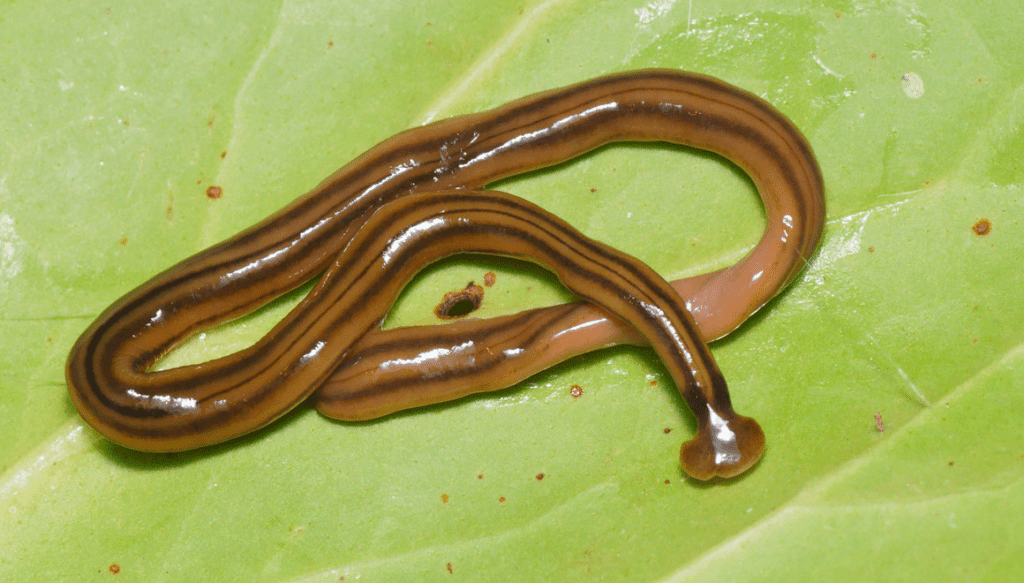This silent invasion has been taking place for 20 years, but scientists have just now noticed.

It’s not every day that an amateur naturalist and gardener publishes a scientific study, but that’s exactly what happened in France. Pierre Gros found some unusual worms in his garden — they were big, predatory, and sported a hammer-like head. He took photos and forwarded them to Jean-Lou Justine of the National Museum of Natural History in Paris.
Justine was annoyed, as he thought someone was playing a prank on him. The worms were obviously hammerhead flatworms (genera Bipalium and Diversibipalium) — the only problem is that hammerhead flatworms are native to the warmer parts of Asia, nowhere near Europe. Gros sent Justin more and more photos, leading the latter to express his frustration to the Washington Post: “The man is bringing back worms from his travels, and he pretends he finds them in his garden!”
But Gros persisted, and after a while, he managed to convince Justine that this was not just a prank. The worms were very much real, and they were very much in France. Shocked, Justine embarked on a four-year survey to see what was going on with the worms, and why they were seemingly thriving in France.

The duo made use of citizen science, asking people to report as many sightings as possible. Observations ranged from Western and Northern France all the way to the South-Eastern corner of the country — even the island of Corsica. At one point, scientists received an email from frightened kindergarteners who thought they had found writhing snakes — but the snakes turned out to be hammerhead worms. Another observation came from a 1999 VHS tape. There was also a Twitter account dedicated to the cause, which sent out photos the team had received.
When the survey was complete, it was revealed that the worms, which can reach up to 27 centimeters (10.6 inches) had invaded France at least 20 years ago, and they were indeed thriving. There are several reasons this was happening: for one, the worms can reproduce asexually, which enables a single individual to produce many offspring immediately. This means that if a single worm somehow arrived in France, it could start a population on its own, something that’s not possible in the case of sexual reproduction. Secondly, the worms also don’t have any natural predators. Thirdly, being so big allows them to overcome competition and fend off other, smaller worms.
Some worms were identified as Bipalium kewense, B. vagum, and Diversibipalium multilineatum. However, two are utterly alien to the stunned scientists and are as yet unnamed.
Of course, worms are an invasive species and they can cause severe problems in their soil ecosystems. France isn’t alone in suffering from this invasion of these worms. Similar cases have been reported in New Zealand, Papua New Guinea, Brazil, and Australia. However, there is surprisingly little scientific literature on the matter.
Vermi con la testa di martello, ecco di cosa si nutrono e come riescono a riprodursi https://t.co/51fI1v9ewH @leggoit
— Jean-Lou Justine (@Plathelminthe4) May 24, 2018
But how did the worms get there in the first place? Justine admits he is still baffled by this. “I don’t understand how this is possible,” he told the Independent. However, this is not an isolated case — invasive species are becoming more and more common in most parts of the world. Invasive shells can travel the world on the hull of ships, invasive fish can devastate entire streams and lakes, and of course, species can also be released into the wild by humans, often with devastating consequences.
Invasive species also tend to have traits that allow them to out-compete native species
Journal Reference: Jean-Lou Justine, Leigh Winsor, Delphine Gey, Pierre Gros, Jessica Thévenot — Giant worms chez moi! Hammerhead flatworms (Platyhelminthes, Geoplanidae, Bipalium spp., Diversibipalium spp.) in metropolitan France and overseas French territories. PeerJ6:e4672 https://doi.org/10.7717/peerj.4672


